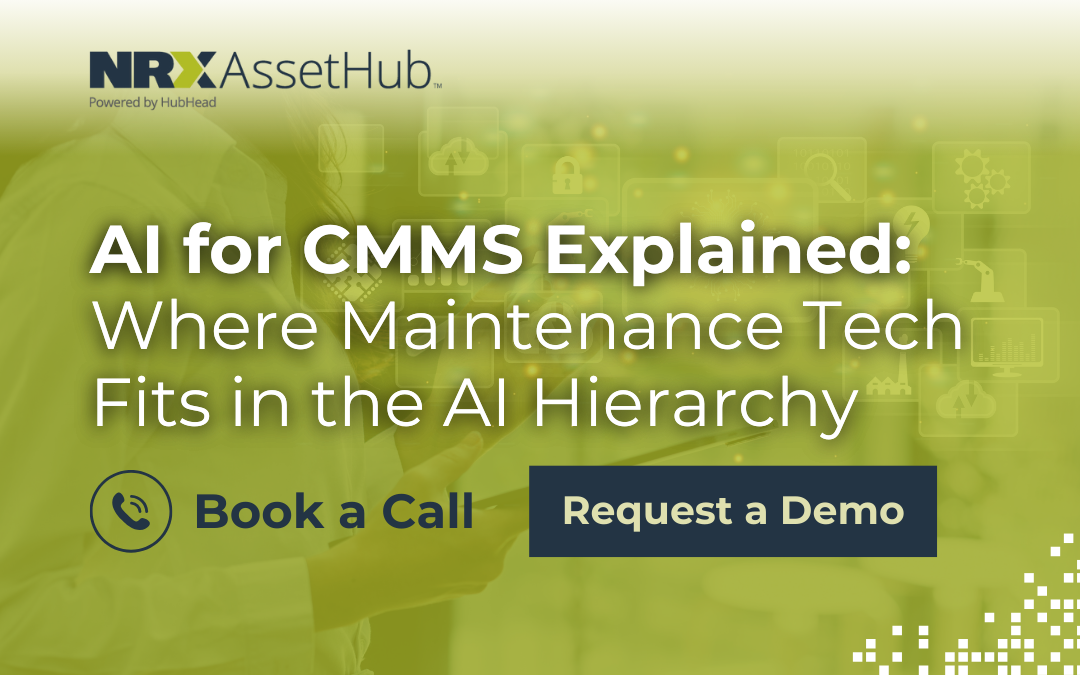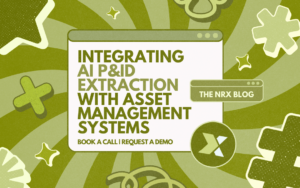According to Forbes, the average cost of downtime can reach as high as $9,000 per minute in large organizations. In industries where uptime drives profitability, maintenance is a strategic priority. CMMS has evolved beyond scheduling tools into intelligent systems. By leveraging AI, these platforms turn maintenance data into insights that reduce risk and deliver business value.

Understanding the AI Hierarchy
Artificial Intelligence is structured in layers. At the foundation is data analytics, which organizes and interprets information from IoT sensors and operational systems. On the other hand, machine learning (ML) identifies patterns and makes predictions. Together, analytics and ML form the applied AI layer. CMMS platforms increasingly function in this layer, combining IoT data with AI-powered insights to guide maintenance decisions.
Where CMMS Fits in AI
Early CMMS platforms focused on preventive schedules and inventory control. Modern AI-driven CMMS integrates IoT sensor data, equipment history, and environmental inputs to generate predictive recommendations. For instance, if a pump shows unusual vibration patterns, an AI-enabled CMMS can flag the anomaly and recommend the parts needed. PwC reports that predictive maintenance can reduce costs by up to 12% and extend asset lifespans by 20%.

Practical Applications of AI in CMMS
AI improves maintenance management by enhancing prediction and resource allocation. Machine learning models analyze sensor data to forecast equipment breakdowns before they occur, which enables proactive action. Additionally, AI prioritizes work orders and forecasts spare part demand, which reduces shortages and excess inventory in turn. According to the U.S. Department of Energy, organizations using predictive maintenance achieve 8% to 12% savings over preventive approaches and as much as 40% compared to reactive strategies, demonstrating the tangible impact of applying AI to maintenance workflows.
The Future of AI in CMMS
McKinsey highlights how gen-AI is already reshaping maintenance with faster diagnostics, decision support, and new ways of working that unlock value at scale. Recent industry reporting shows momentum on adoption: 65% of organizations expect to implement AI-powered maintenance solutions by 2026, with 44% already adopting these solutions.
Conclusion
Within the AI hierarchy, CMMS represents the applied AI layer where analytics, ML, and IoT converge to create smarter maintenance processes. Far from being futuristic hype, AI-driven CMMS is already a practical tool for reducing downtime and improving reliability. For organizations focused on operational excellence, adopting AI within CMMS offers both immediate gains and long-term competitive advantage.
Integrating AI P&ID Extraction with Asset Management Systems
ISO 14224 vs Other Maintenance Standards: What Sets It Apart?
Building Trust in Your Asset Data: Strategies for Governance
Share this article




